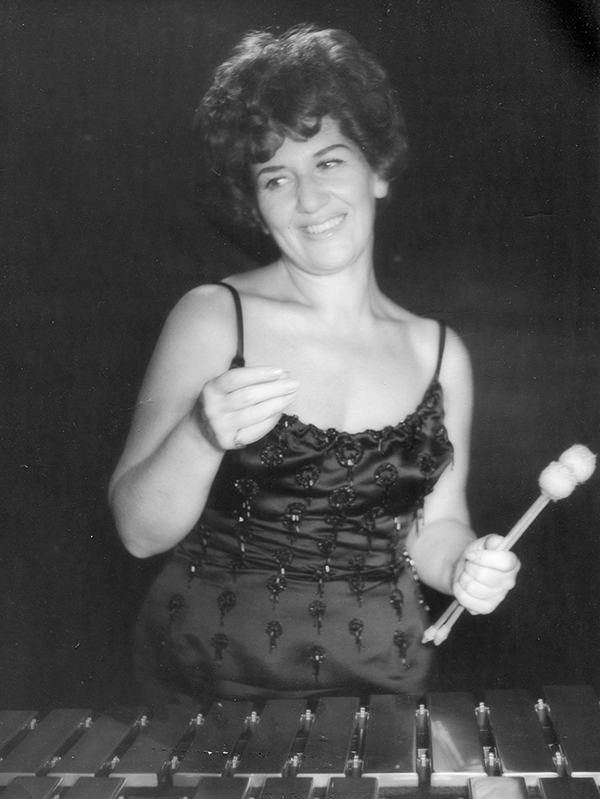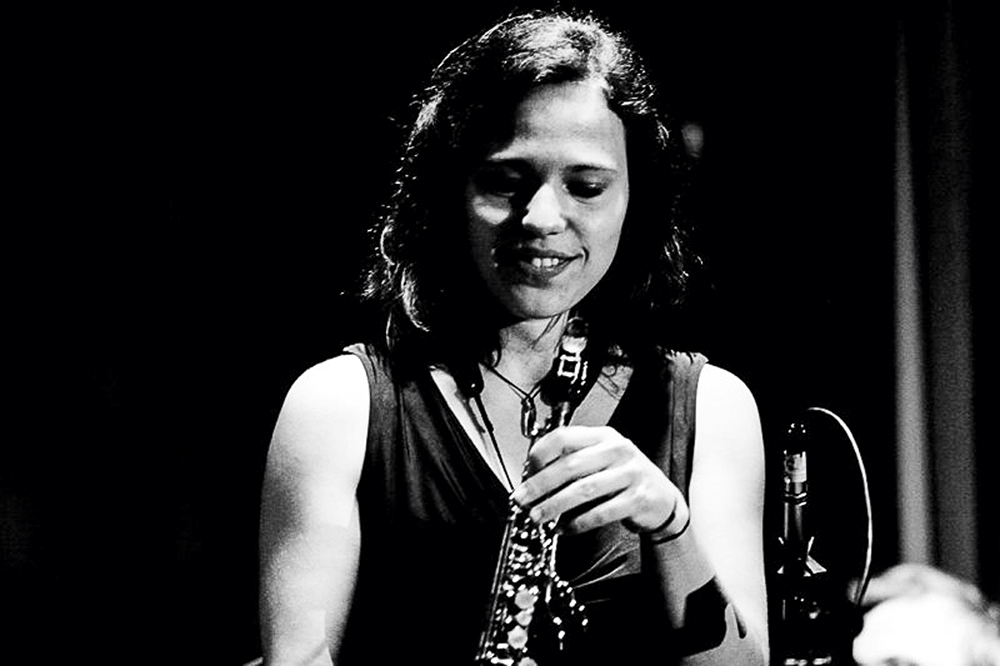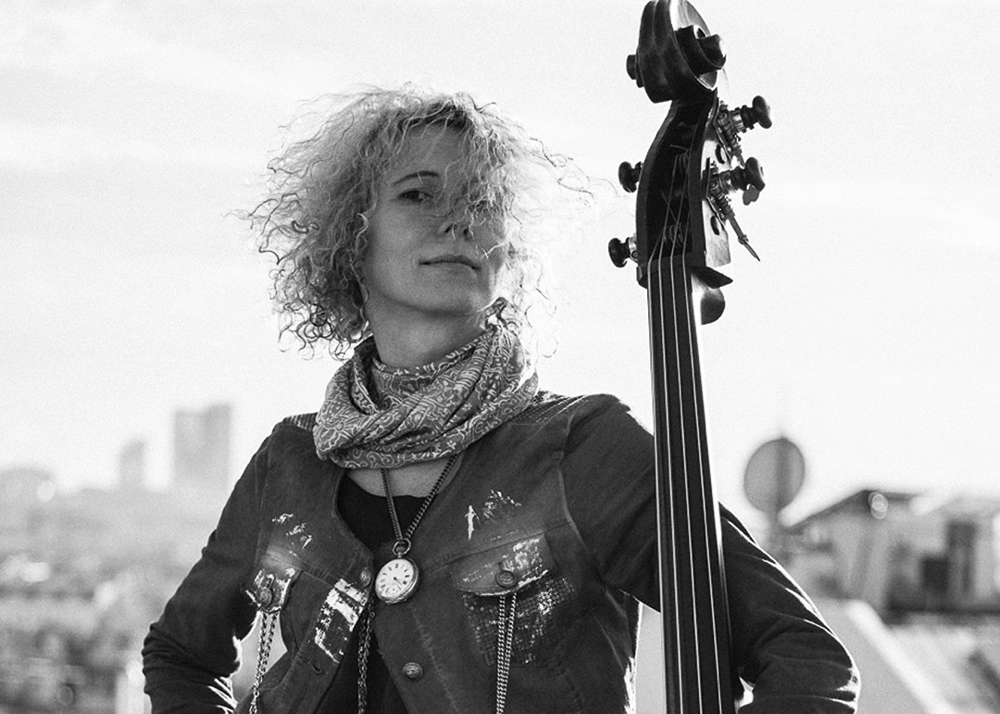Instrumentalistinnen in der österreichischen Jazzszene
Die Geschichte des österreichischen Jazz weist eine Vielzahl von nennenswerten Musikerinnen auf. Besonders die aktuelle Szene zeichnet sich durch Bandleaderinnen wie die Saxophonistin Viola Falb oder die Kontrabassistin Gina Schwarz aus. Letztere möchte im aktuellen Studienjahr mit dem Gina Schwarz PANNONICA-Project Einblick in Karrieren von Frauen im Jazz geben, Dialoge innerhalb verschiedener Jazzszenen in Österreich und den Austausch mit internationalen Jazzszenen fördern.
Jazz wurde nach dem Zweiten Weltkrieg zu einem bedeutenden Teil der österreichischen Musikkultur. In den 1950er Jahren entwickelten sich in Wien und Graz eigenständige Jazzszenen. Österreich war das erste europäische Land, das den Jazz akademisch institutionalisierte: 1965 gründete die Akademie für Musik und darstellende Kunst Graz eine Jazzabteilung. Die überwiegende Mehrheit der Studierenden – ebenso wie Jazz-Instrumentalisten im Allgemeinen – waren männlich.
Noch heute ist der Beruf „Jazz-Musiker“ ein primär männlich dominierter. Frauen finden häufig in der Funktion der romantisch-verklärten Sängerin ihren Platz. Die aktuelle österreichische Jazz-Szene repräsentiert das Gegenteil. Freilich sind Konzertplakate, auf denen sich der Jazz-Nachwuchs in maskuliner Pose inszeniert, noch nicht aus den Klubs wegzudenken, gleichzeitig wird die Szene durch Formationen, in denen sich Instrumentalistinnen künstlerisch entfalten und nicht nur den Part der „Sidewoman“ übernehmen, erweitert.

In der Betrachtung von Frauen im Jazz werden geschlechtsspezifische Fähigkeiten, Zuständigkeiten und Identitäten hinterfragt. Diskussionen über die Vorbildwirkung für angehende Jazzmusikerinnen führen unter anderem zur Dekonstruktion der geschlechtsbezogenen Kategorisierung von Instrumenten.
Eine Instrumentalistin, die ein für Frauen „untypisches“ Instrument spielte, konnte die österreichische Jazzszene bereits in den 1950er Jahren vorweisen. Die in Wien geborene Vibraphonistin Vera Auer (1919–1996) zählt zu den ersten europäischen Jazz-MusikerInnen, die den Modern Jazz in ihr Repertoire aufnahmen. Auer absolvierte am Wiener Konservatorium eine Klavierausbildung, zusätzlich spielte sie Akkordeon. Sie betätigte sich zunächst als Akkordeonistin und arbeitete dann hauptsächlich als Vibraphonistin mit dem Gitarristen Attila Zoller (1927–1998) zusammen. Nach dem ersten Erfolg bei einem Rundfunk-Amateur-Wettbewerb folgte ein Wechsel in den professionellen Bereich und die Gründung einer Combo in der Wiener Jazz-Szene. Die Vera Auer Combo bestand unter anderem aus Musikern wie Hans Salomon (*1933) oder Joe Zawinul (1932–2007). Nach einem mehrjährigen Aufenthalt in Frankfurt lebte und arbeitete Vera Auer ab den 1960er Jahren vorwiegend in den USA, entwickelte fortlaufend ihren Stil, kooperierte künstlerisch mit namhaften Jazzmusikern, publizierte eigene Texte und Gedichte.
Aus den Jahrgängen 1920 bis 1955 sind kaum österreichische Jazzinstrumentalistinnen bekannt. Eine Ausnahme bildet die Schlagzeugerin Ursula Anders (*1938), die nicht nur als Friedrich Guldas Nachlassverwalterin Bekanntheit erlangte. Nach einem Schlagzeug-Studium in Salzburg entwickelte sich eine intensive Zusammenarbeit mit dem (Jazz-)Pianisten und Komponisten Friedrich Gulda im Bereich der freien Musik ab dem Jahr 1975. Gulda widmete ihr die Werke Opus Anders (1981) und Concerto for Ursula (1983). Auftritte, bei denen beide unbekleidet auf der Bühne performten, erregten öffentliches Aufsehen.

Ab den 1980er Jahren waren Instrumentalistinnen keine Randerscheinung mehr, sondern wurden zum festen Bestandteil der österreichischen Szene. Charakteristisch sind die Öffnung des eigenen Musikstils gegenüber anderen Genres und daraus resultierende Crossover-Projekte. Zu den Akteurinnen zählen unter anderem die Pianistin und Komponistin Adriane Muttenthaler (*1955), die eine Ausbildung an der mdw und am Konservatorium der Stadt Wien absolvierte. Als Bandleaderin des Jazzsextetts CRISS – CROSS verbindet sie Jazz mit klassischer Musik. Die Perkussionistin Ingrid Oberkanins (*1964) studierte unter anderem Lehramt Musikerziehung/ Geschichte und klassisches Schlagwerk und erhielt nach Abschluss des Studiums Unterricht in Jazz und außereuropäischer Rhythmik. Oberkanins arbeitet mit Ensembles und KünstlerInnen (Vienna Art Orchestra, C. Muthspiel, Percussiontrio Rhythmusa) genreübergreifend als Perkussionistin zusammen.
In der aktuellen Jazz-Szene gelingt es immer mehr Musikerinnen, sich von der Zuschreibung der „Sidewoman“ zu lösen und die eigenen Projekte in den öffentlichen Fokus zu stellen. Die mdw-Absolventin Viola Falb (*1980) verarbeitet in ihren Kompositionen Elemente des freien Jazz, der Folklore und der Kammermusik. Mit Projekten wie Falb Fiction, Phoen und Kitsch’n’Glory konnte sie nicht nur mediale Aufmerksamkeit, sondern auch zahlreiche Auszeichnungen gewinnen. Im Grenzbereich Jazz, Elektronik, improvisierte Musik und Literatur agiert die Komponistin, Sängerin und elektronische Musikerin Susanna Ridler (*1968). Mit ihrem Elektronik-Jazz-Pop-Projekt [koe:r] experimentiert sie mit der Synthese artifizieller und akustischer Klänge und verknüpft Tradition und Moderne mit einem individuellen Stilzugang.

Die Bassistin und Bandleaderin (Woodclock, Jazzista, SchwarzMarkt) Gina Schwarz (*1968), aktuell die einzige Instrumentalistin, die an einem Institut für Jazz-/Popularmusik an einer öffentlichen Universität in Österreich unterrichtet, erhielt den Auftrag, in der Spielzeit 2017/18 eine Konzertreihe im Rahmen der Porgy&Bess Stageband zu organisieren. Das Gina Schwarz PANNONICA-Project versammelt unter dem Motto „Starke Stimmen“ MusikerInnen der (inter-)nationalen Jazzszene, die die Stageband künstlerisch bereichern und sich gleichzeitig an Workshops und Diskussionen am Institut für Popularmusik der mdw beteiligen. Die Namensgeberin Pannonica de Koenigswarter (1913–1988) war eine der wichtigsten Förderinnen des Modern Jazz, die mit geltenden gesellschaftlichen Konventionen der USA in den 1950er Jahren brach und sich für Probleme benachteiligter afroamerikanischer JazzmusikerInnen einsetzte. Mit ihrem Projekt ermöglicht Gina Schwarz Diskussionen und Dialoge mit internationalen Musikerinnen aus unterschiedlichen Genres, Generationen und Ländern. Zu den Gästen im Herbst 2017 zählen: Komponistin Tanja Brüggemann (A), Visual Artist Conny Zenk (A), Posaunistin Karin Hammar (SWE) und Pianistin Julia Hülsmann (D).
Das Gina Schwarz PANNONICA-Project (Projektteam: Gina Schwarz und Magdalena Fürnkranz) ist ein Projekt des Instituts für Popularmusik mit freundlicher Unterstützung durch die Plattform Gender_mdw. Weiterführende Informationen zu den Workshops und der Konzertreihe unter www.mdw.ac.at/gender/pannonica-project
Veranstaltungshinweis: Freitag, 17. November 2017, 15.00 Uhr
Podiumsdiskussion „If you want to go fast, go alone. If you want to go far, go together“ (Moderation: Rosa Reitsamer) im Rahmen von 15 Jahre ipop u. a. mit Hildegard Bernasconi & Gabriele Rummel (Frauen Musik Büro Frankfurt), Tanja Brueggemann (Komponistin), Helene Griesslehner (Music Women Austria), Conny Zenk (Visuals, Installationen) im Joseph Haydn-Saal, Anton-von-Webern-Platz 1, 1030 Wien

